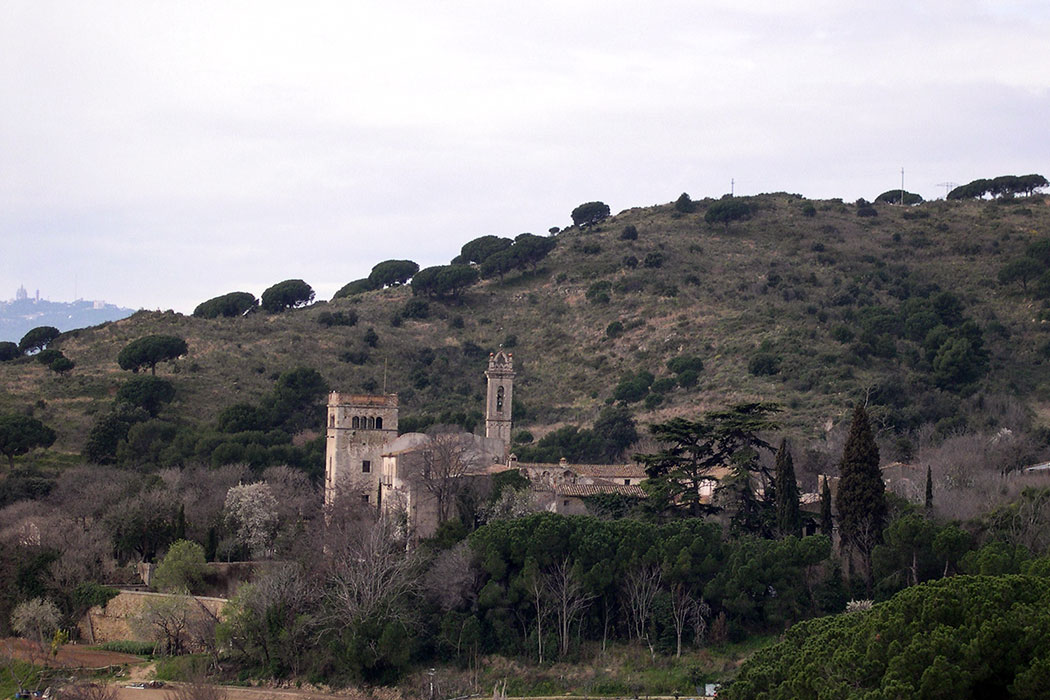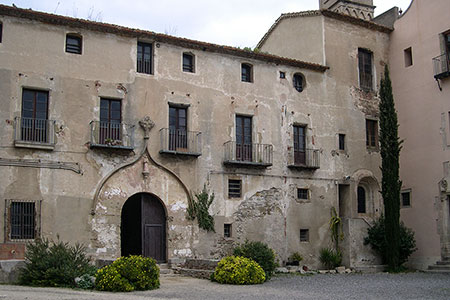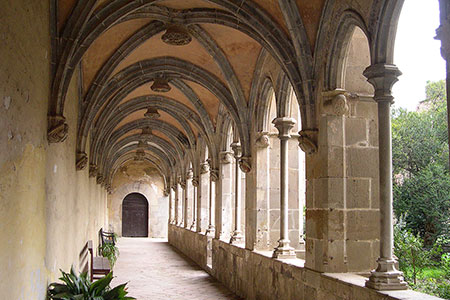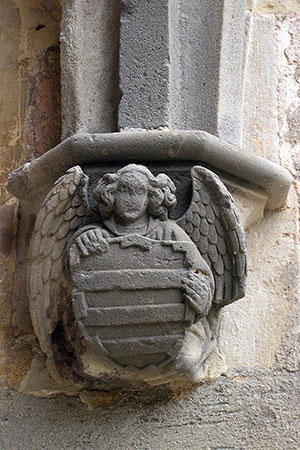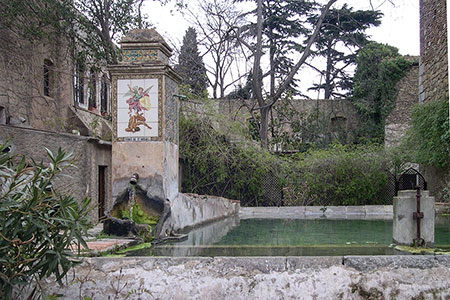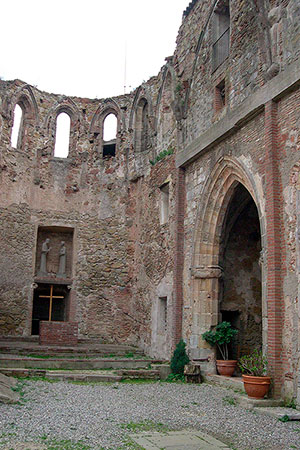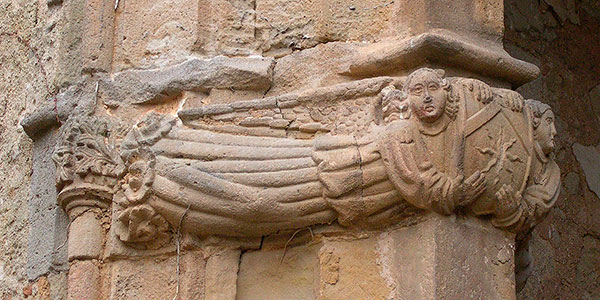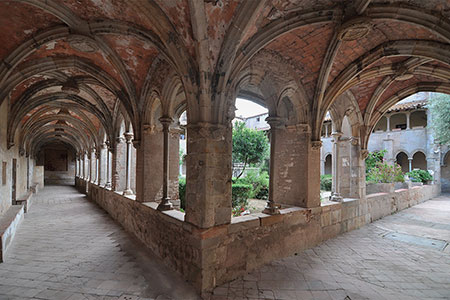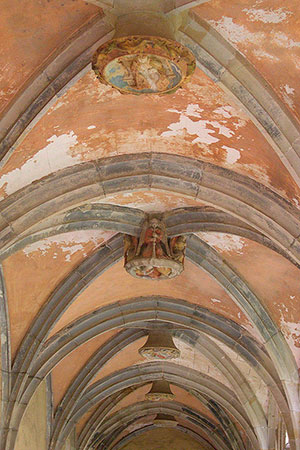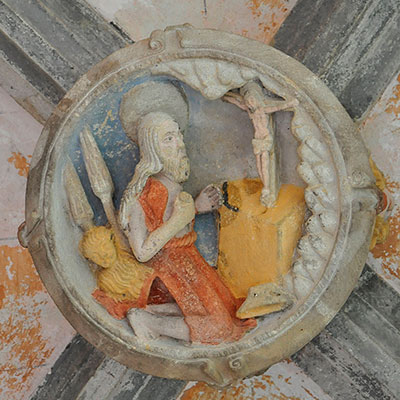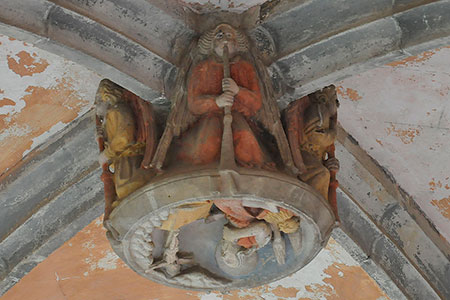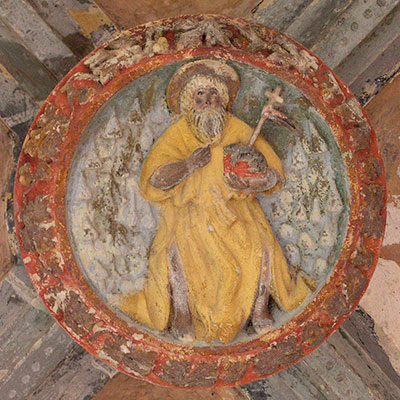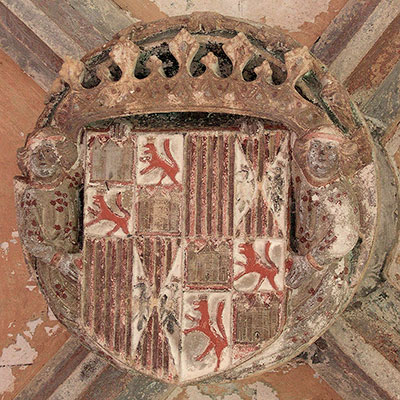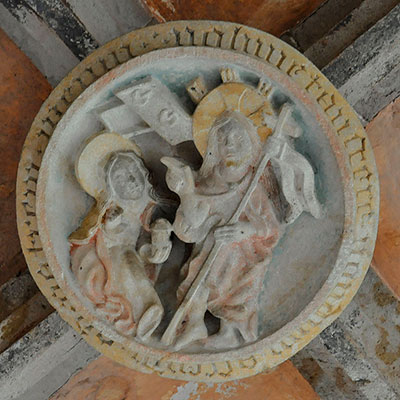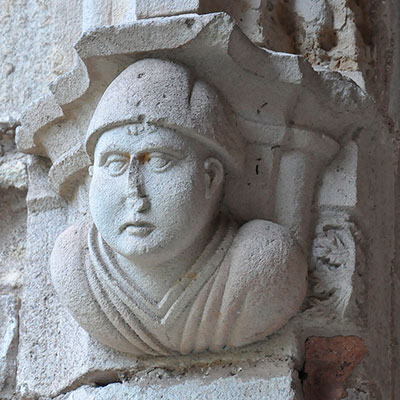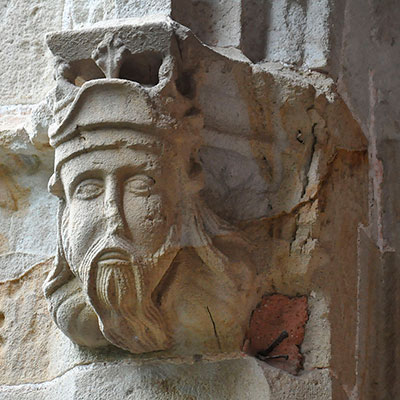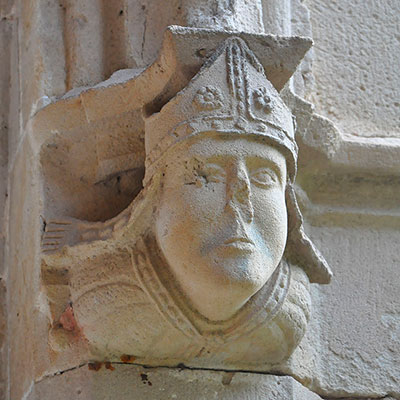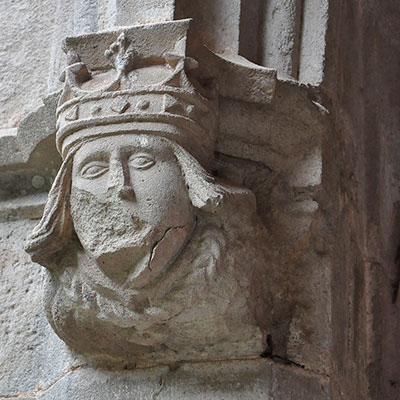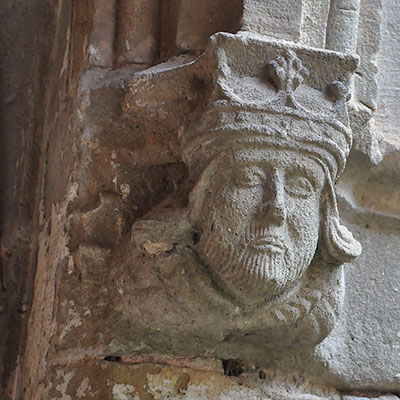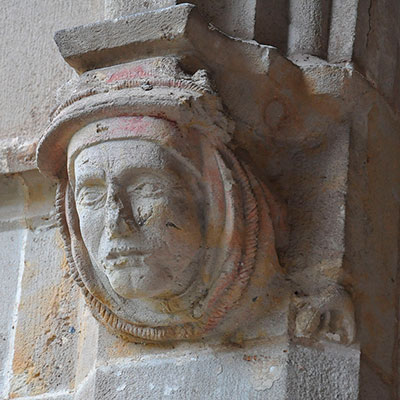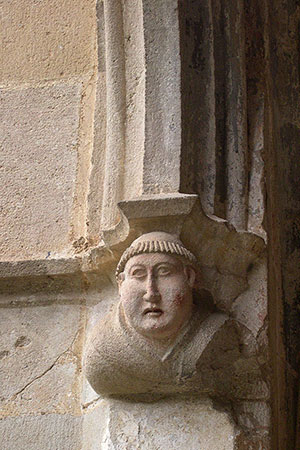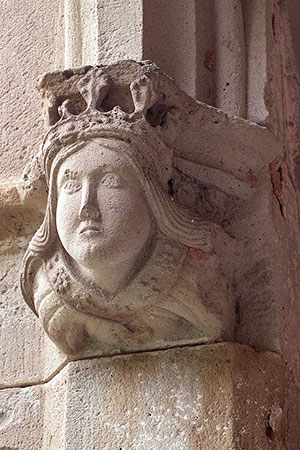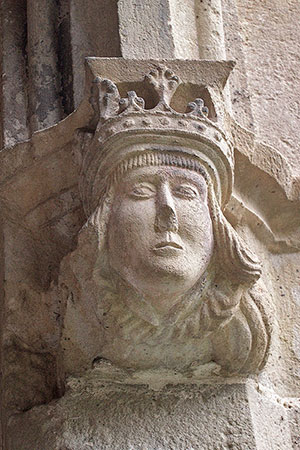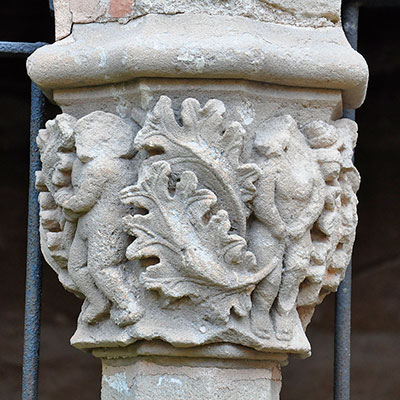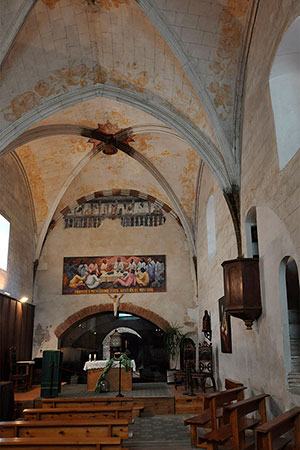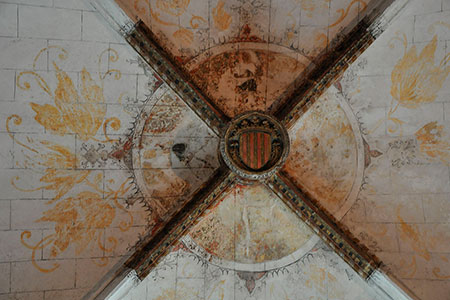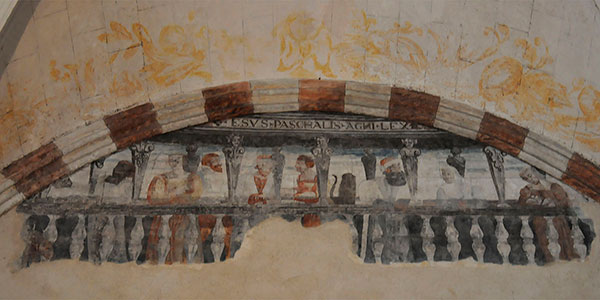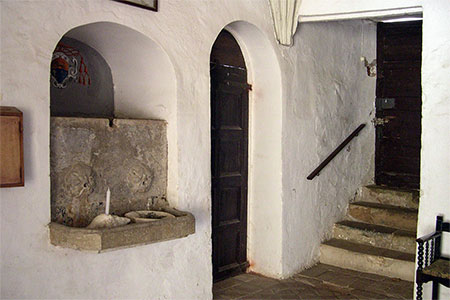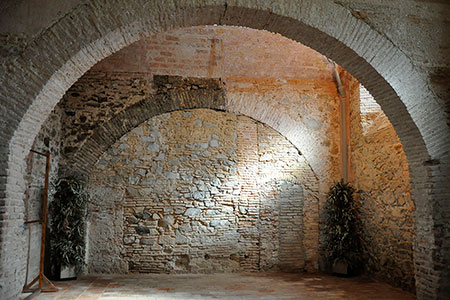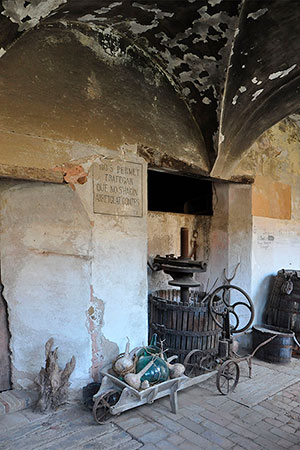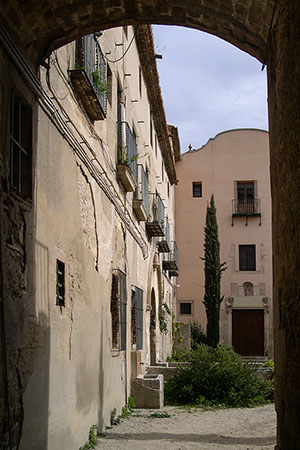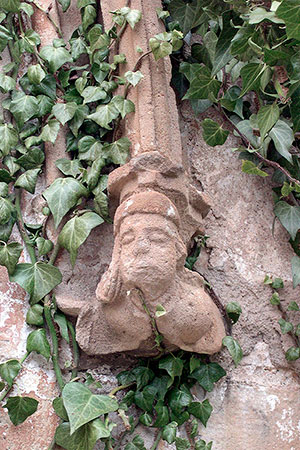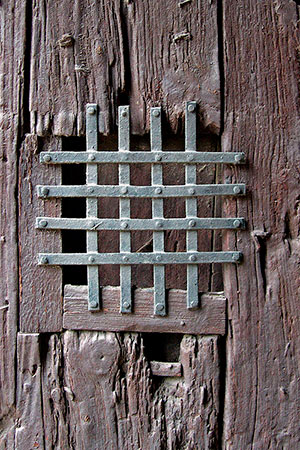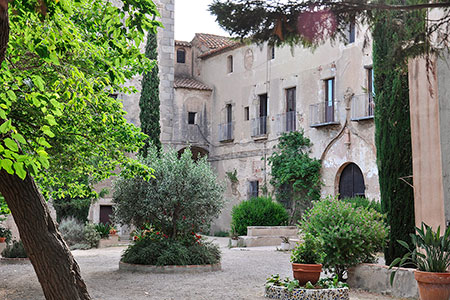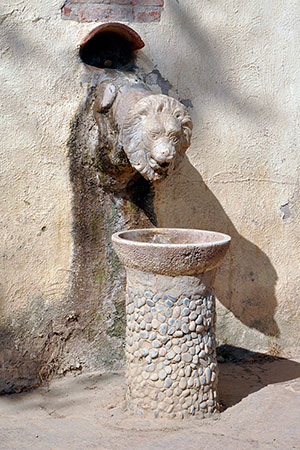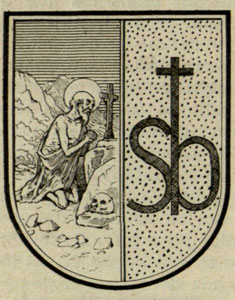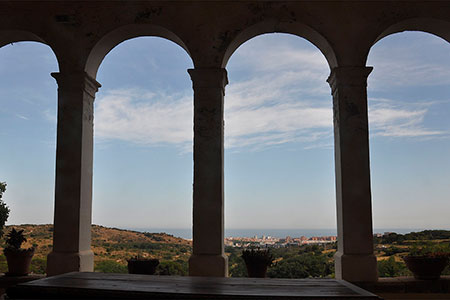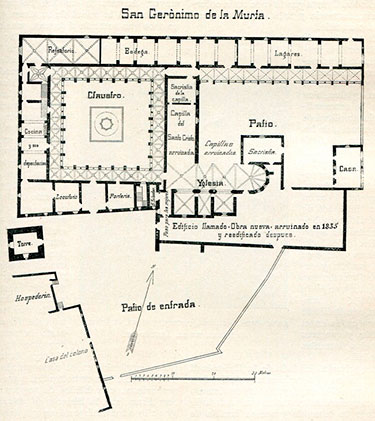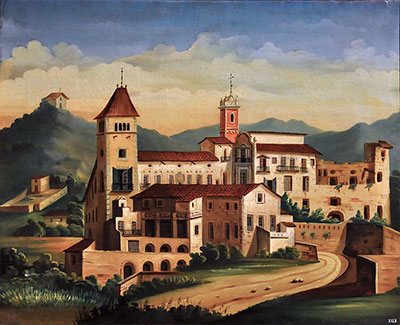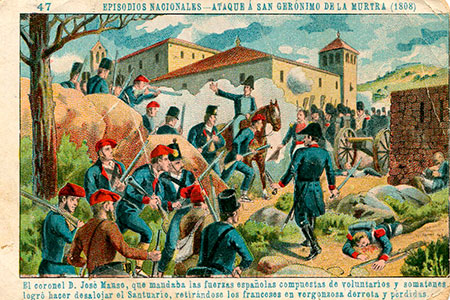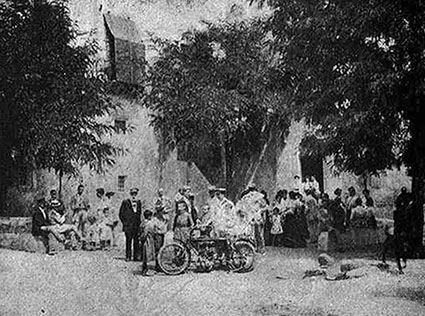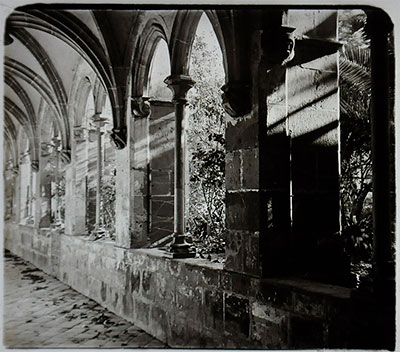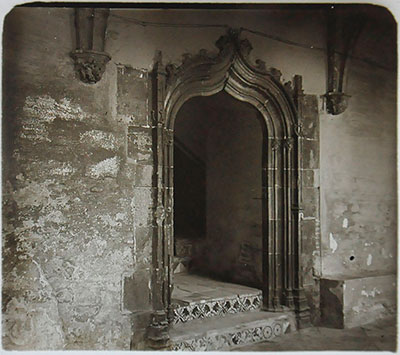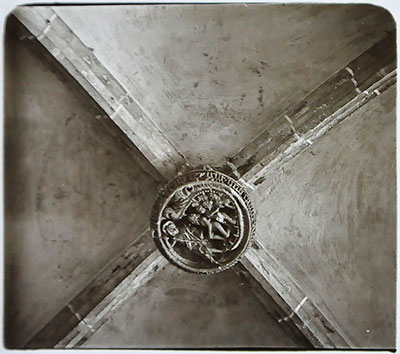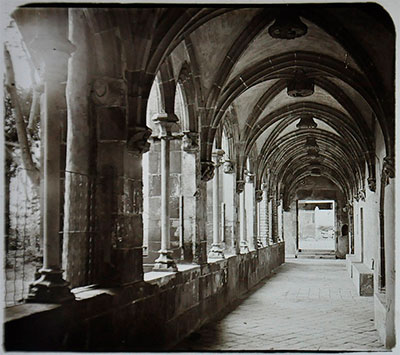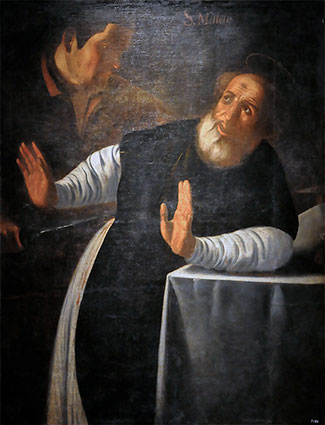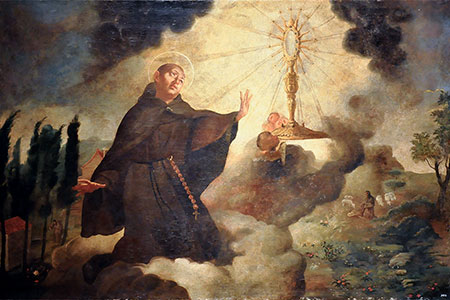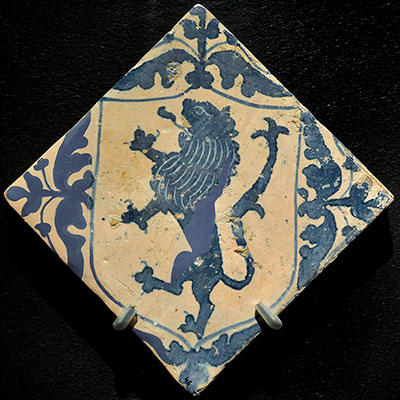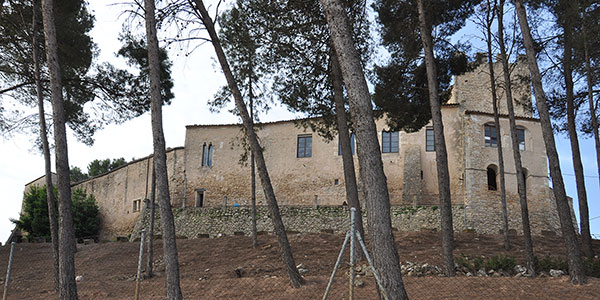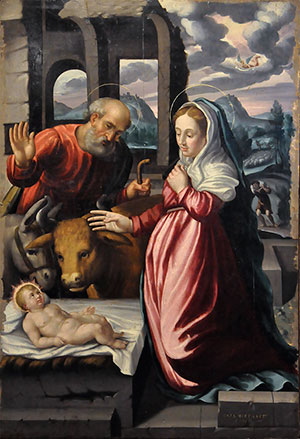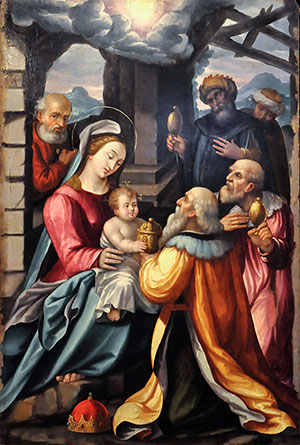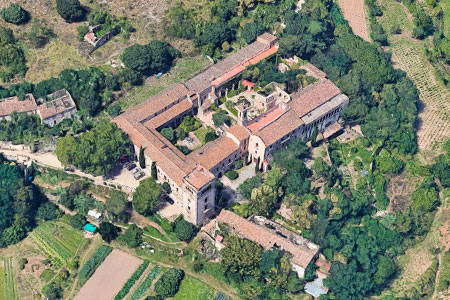Monastery of Sant Jeroni de la Murtra
Sant Jeroni de la Vall de Betlem / Sant Jeroni de la Murta
(Badalona, Barcelonès)
Sant Jeroni de la Murtra originated in Sant Pere de Ribes (Garraf), in the monastery of Sant Jeroni de Montolivet, which was founded in 1413 thanks to the patronage of Bertran Nicolau, who had been working on the project for ten years. It soon became clear that the chosen site was inadequate, as it was not suitable for cultivation, water was scarce and there was a shortage of firewood.
In 1415, the same community approached the founder to authorise its transfer to another site, a necessary step since Nicolau had explicitly vetoed it. In 1416, the necessary authorisation was obtained from the Hieronymite order, and in the same year the sale of Montolivet and the purchase of the house at La Murtra, where the community was to move definitively, took place. The purchase of La Murtra house included the lands and other annexed possessions. The new monastery was given the name of Sant Jeroni de la Vall de Betlem, but it was to be known as Sant Jeroni de la Murtra.
Initially, it had a precarious development and was on the verge of disappearing. In 1431, an attempt was made to unite it with Sant Jeroni de la Vall d'Hebron, but this was never achieved. At the end of the 15th century, it enjoyed an improvement and gained the protection of royalty (John II, the Catholic Monarchs and Charles I) who contributed to its construction. John II, who visited the Murtra on several occasions, took part in the construction of the refectory, which is still preserved today. The monarchs also took part in the construction of the cloister, built from 1465 onwards. The sculptural decoration it contains is important, from the keystones to the corbels, with representations of religious scenes and different characters, including the Catholic Monarchs and Christopher Columbus.
This monastery was the site of the reception of Christopher Columbus by the Catholic Monarchs on his return from his first voyage to America. From 1439 he had under his dominions the town and castle of Sant Martí de Tous (Anoia, Barcelona), where some sources place a small monastery, a subsidiary of this one. At the end of the 16th century, the defence tower was built to protect it from piracy. During the Peninsular War, in 1808, Sant Jeroni de la Murtra was the scene of fighting, as the place served as a base for the troops led by Francesc Milans del Bosch. It also underwent a temporary exclaustration between 1820 and 1823, when it was occasionally used as a hospital. The definitive exclaustration, which brought about the end of the monastery, came in 1835.
The place was burnt down and suffered serious destruction, the most notable loss being the church and one of the cloister galleries. However, it must be said that the remains preserved are still very important. The monastery buildings passed into private hands, essentially to two families who, from the end of the 19th century until the Civil War, adapted it as a summer house for wealthy families. In 1946 the part of the monastery was acquired by Francesca Güell. Today it is home to the Catalunya-Amèrica Foundation, which researches and disseminates the relations between Catalonia and the New World, and in 2014 the Murtra was declared a Cultural Asset of National Interest. The Associació d'Amics de Sant Jeroni de la Murtra (Association of Friends of Sant Jeroni de la Murtra) looks after the cultural dissemination of the ancient monastery.
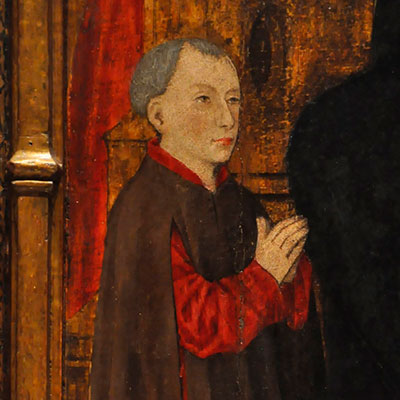
Detail of the Altarpiece of the Virgin Mary, St. Augustine and St. Nicholas of Tolentino
From Domus Dei de Miralles (Baix Llobregat)
At MNAC, Barcelona
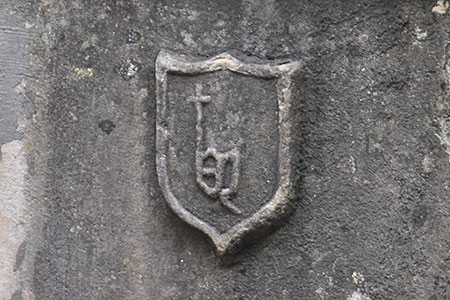
Blazon of the founder in the fountain at the cloister
Testimonials of the old art pieces of the house preserved outside the monastery
La Murtra owned other patrimonial assets outside the monastery, and perhaps the most important was the dominion of Tous (now Sant Martí de Tous, in Anoia), where, among other rights, they administered justice. They were also responsible for the church of Sant Martí, where pieces of the Roser Altarpiece, painted at La Murtra by the friar Damià Vicenç, are preserved.
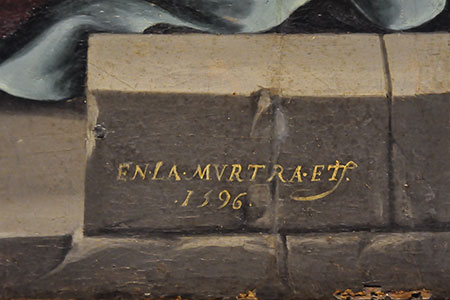
Damià Vicenç (1595-96)
Parish of Tous, Anoia
- AYMAR I RAGOLTA, Jaume (1993). Cristòfor Colom i Sant Jeroni de la Murtra. Carrer dels Arbres, núm. 5. Museu de Badalona
- AYMAR I RAGOLTA, Jaume (1993). El monestir de Sant Jeroni de la Murtra. Diputació de Barcelona / Ajuntament de Badalona
- AYMAR I RAGOLTA, Jaume (2003). El monestir de Sant Jeroni de la Murtra. L'art gòtic a Catalunya. Arquitectura II Catedrals, monestirs i altres edificis religiosos 2. Barcelona: Enciclopèdia Catalana
- BALAGUER, Víctor (1863). Historia de Cataluña y de la Corona de Aragón. Tomo V. Barcelona: S. Manero
- BARRAQUER I ROVIRALTA, Gaietà (1906). Las casas de religiosos en Cataluña durante el primer tercio del siglo XIX. Tomo II. Barcelona: F. J. Altés
- BARRAQUER I ROVIRALTA, Gaietà (1915). Los Religiosos en Cataluña durante la primera mitad del siglo XIX. Vol I. Barcelona: F. J. Altés
- BARRAQUER I ROVIRALTA, Gaietà (1918). Los Religiosos en Cataluña durante la primera mitad del siglo XIX. Vol IV. Barcelona: F. J. Altés
- CAU, Miquel Àngel, i altres (1991). Memòria campanya d'excavació monestir Sant Jeroni de la Murtra. Memòries d’intervenció arqueològica. Generalitat de Catalunya
- CHAVARRÍA ARNAU, Alexandra (1995). L’art barroc al Monestir de Sant Jeroni de la Murtra. Carrer dels Arbres. Revista anuari del Museu de Badalona, núm. 6. Museu de Badalona
- CUYÁS TOLOSA, José Ma. (1966). Llibre V dels actes capitulars dels anys 1752 a 1832 del Monastir de Sant Geronim de la Murtra. Badalona: Duran
- CUYÁS TOLOSA, José Ma. (1972). Resumen histórico del Monasterio de San Jerónimo de la Murtra. Badalona: Duran
- DÍAZ MARTÍ, Carles (2004). Primera menció del futur Monestir de Sant Jeroni de la Murtra. Carrer dels Arbres. Revista anuari del Museu de Badalona, núm. 15
- DÍAZ MARTÍ, Carles (2006). Bertran Nicolau fundador de Sant Jeroni de la Murtra. Badalona: Museu de Badalona
- DÍAZ MARTÍ, Carles (2010). L’Obra Nova de Sant Jeroni de la Murtra. Carrer dels Arbres. Revista anuari del Museu de Badalona, núm. 21
- DÍAZ MARTÍ, Carles (2017). L’establiment d’un nou orde monàstic a la Catalunya medieval: Sant Jeroni de la Vall d’Hebron i Sant Jeroni de la Murta (1393-1500). Tesi doctoral. Univesitat de Barcelona
- DÍAZ MARTÍ, Carles i altres (2016). El monestir de Sant Jeroni de la Murtra: 600 anys d’història. Badalona: Museu de Badalona
- DÍAZ MARTÍ, Carles, ed. (2013). La primera crònica del monestir de Sant Jeroni de la Murtra (1413-1604). Barcelona: Fund. Noguera
- GAVÍN, Josep M. (1992). Inventari d'esglésies. Vol. 25. Barcelonès I. Barcelona: Arxiu Gavín
- JIMÉNEZ DE GARNICA, Mª Reyes (1994). Restauració del refetor de Sant Jeroni de la Murtra. Carrer dels Arbres, núm. 5. Museu de Badalona
- NIETO, M. Dolors. (2018). El llibre de costums del monestir de Sant Jeroni de la Murtra de l'any 1789. Carrer dels Arbres. Revista anuari del Museu de Badalona, núm. 3
- RIERA, Jaume (2008). Els primers monestirs de jerònims a la Corona d'Aragó (1374-1414). Studia Monastica. Vol. 50-2. Barcelona: Abadia de Montserrat
- SIGÜENZA, José de (1600). Segunda parte de la historia de la orden de San Gerónimo. Madrid: Imprenta Real
- TORRAS TILLÓ, Santi (1012). Fra Damià Vicens, pintor conventual de la Murtra (1585-1612). Noves dades i atribucions al Museu de Terrassa. Terme. Núm. 27
